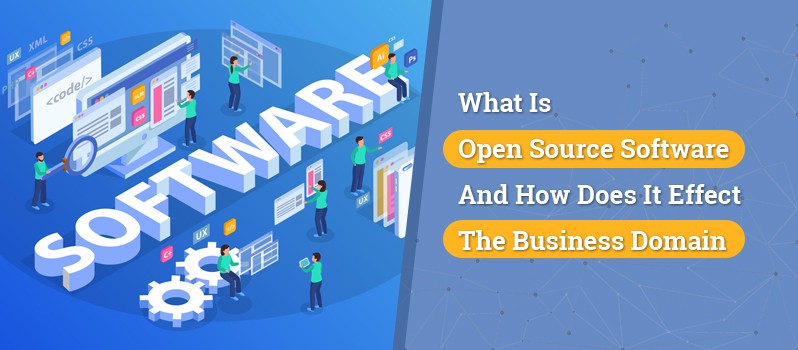What Is Open Source Software, And How Does It Effect The Business Domain
We are living in a world where technology is advancing faster than ever before. Many people have started to adopt open source software over traditional software because it’s free and allows for more innovation with the end user.
What is Open source ?
Open source software is software that allows for the collaborative development of software. This type of software relies on a decentralized model where anyone can access and modify the source code. The benefits of Open Source include its ability to be faster to develop, lower cost to maintain, and more secure.
Open source has already revolutionized the business domain with its ability to create more efficient and effective systems. Some of the most notable examples of Open Source software in use today include the Linux kernel and Apache web server.
How does public access affect open source ?
Public access to source code is one of the most important factors in the success of open source . When software is made available to the public, it can be reviewed and modified by anyone, which can improve its quality and reliability. This openness also makes it easier for companies to use and modify the software, which could lead to new innovations.
However, public access has its own set of challenges. Anyone can make a copy of the software and distribute it without permission, which could lead to piracy or intellectual property infringement. Additionally, when the code is open, companies may be reluctant to invest in it because they don’t know how it works or what risks they are taking.
Overall, public access to source code is an important part of the success of open source . It allows companies to use and modify the software easily, improves its quality and reliability, and makes it more likely that companies will invest in it.
Pros and Cons of Open Source
Open source software is software that is released under a license that allows users to see, change, and improve the code. The Pros of using open source are that it is cost effective, it often has better features than proprietary software, and it can be quickly adopted by a company. The Cons of open source include that it can be difficult to find and manage developers for a project, it can take longer to develop a project using open source than using proprietary software, and there may be fewer opportunities for revenue from open source projects.
How Open Source Provides Value to a Business Domain
Open source software provides businesses with a wealth of benefits, including increased efficiency and cost savings. Open source projects are typically collaborative, transparent, and inclusive. This means that business stakeholders can interact directly with the developers who are responsible for the project. This transparency allows businesses to understand the codebase and how it works, which can lead to improved efficiency and innovation. Additionally, open source projects often have a larger community of developers who can help solve problems and provide support. This widespread collaboration leads to better quality software that is easier to maintain. Finally, open source projects often have a lower development cost than proprietary software. In short, open source provides businesses with tangible benefits that can improve their bottom line.
Conclusion
In this article, we will explore what open source is and how it can benefit your business. We will also discuss the different types of licenses that open source comes with and how these might affect your business. Finally, we will give you some tips on how to get started using open source in your business. I hope that this article has given you a better understanding of what open source software is and why it could be beneficial to your business. If you have any questions or comments, feel free to leave them below! true




